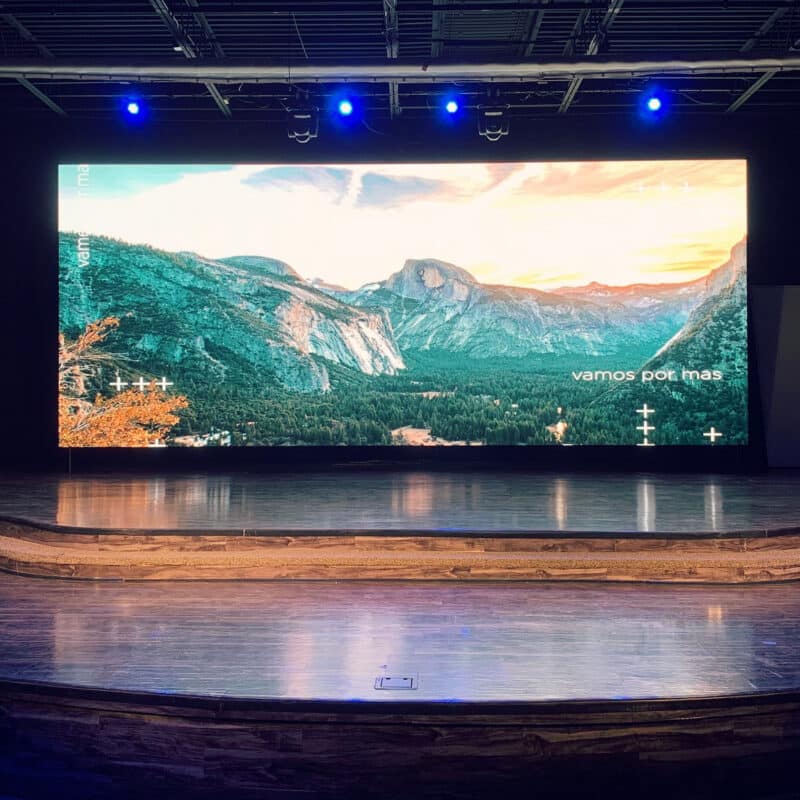Examining the Wide-ranging Connectivity Options Offered for LED Display Panels
Examining the Wide-ranging Connectivity Options Offered for LED Display Panels
Blog Article
LED display panels have gained popularity for their capacity to deliver crisp visuals in various settings, from corporate environments to event venues. One of the primary aspects of these panels is their connectivity options, which allow users to connect them to multiple devices and systems. Comprehending the diverse input options available for LED wall panels is vital for enhancing their use and effectiveness. This discussion details these options, highlighting how they can cater to various needs and preferences.
One common interface method for LED wall panels is High-Definition Multimedia Interface. HDMI is broadly known for transmitting high-quality video and audio streams between components. This connection type is especially beneficial in commercial environments, such as meeting spaces or classrooms, where presentations or video content are often displayed. By using HDMI cables, users can seamlessly connect laptops, projectors, and streaming devices to LED wall panels, guaranteeing a sharp and vibrant display of media.
Another popular interface option is DisplayPort, which is comparable to High-Definition Multimedia Interface but offers additional advantages. Display Port can support elevated refresh rates and resolutions, making it an excellent choice for gaming or design-heavy applications. For those deploying Light Emitting Diode wall panels in environments where performance is critical, such as competitive gaming venues or design studios, Display Port can provide the necessary visual quality. Moreover, many contemporary computers and graphics cards include DisplayPort connections, making it a convenient solution for technology-oriented professionals.
In addition to HDMI and Display Port, cordless transmission options are becoming increasingly prevalent in LED wall panel technology. Wireless interfaces allow operators to share content without the need for physical cables, promoting a cleaner and more adaptable configuration. Platforms such as Wi-Fi and Bluetooth enable users to link smartphones, tablets, and laptops seamlessly to Luminescent Diode wall panels without cumbersome wires. This convenience is especially beneficial in fast-paced settings like exhibitions or events, where quick changes to displays are often needed.
For larger deployments or more intricate configurations, LAN integration through Ethernet is another viable option. Ethernet connections provide a consistent and robust way to connect multiple LED wall panels within a network. This setup is ideal for electronic display use cases found in retail centers or transport hubs, where multiple panels may need to present coordinated content across a wide area. By using Ethernet cables and network switches, users can ensure that all connected panels receive uniform data and content efficiently.
Finally, it's important to evaluate the evolution of interface technology with advancements such as Universal Serial Bus-C and Thunderbolt 3. These newer connection types offer increased data transfer speeds and versatility by allowing one cable to handle both power delivery and data transmission. As more devices adopt these standards, LED wall panels equipped with USB-C ports will likely become more common. This evolution in integration not only improves the capabilities of Luminescent Diode wall panels but also coincides with the growing trend of minimalism in technology setups by reducing the number of cables slim profile led lights needed.
In conclusion, exploring the diverse connectivity options available for LED wall panels uncovers many opportunities for operators across multiple industries. From conventional approaches like High-Definition Multimedia Interface and DisplayPort to modern wireless solutions and moved here LAN setups, each option serves unique purposes tailored to specific needs. Additionally, emerging technologies like Universal Serial Bus-C offer further developments in how professionals utilize LED wall panels. By grasping these integration alternatives, end-users can make strategic selections that optimize their overall experience with these versatile display tools.